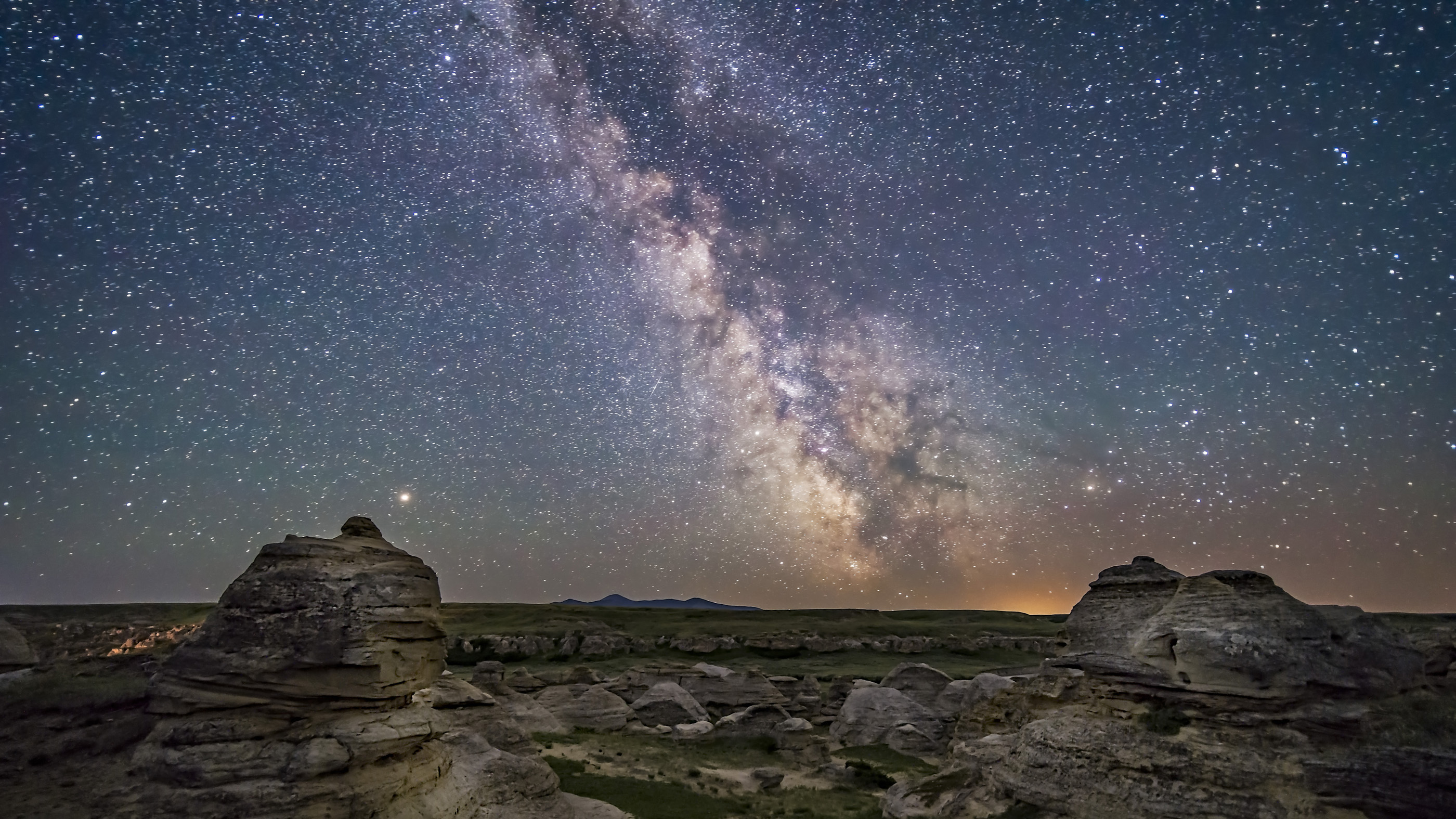Astronomers find the 'safest place' to live in the Milky Way

Astronomers have searched the entire Milky Way to identify the safest places to live. It turns out, we're in a pretty good spot.
But if the past year has made you feel ready to relocate to another planet, you might want to look toward the center of the galaxy, according to the new research.
The new findings were made by a group of Italian astronomers, who studied locations where powerful cosmic explosions may have killed off life. These explosions, such as supernovas and gamma-ray bursts, spew high-energy particles and radiation that can shred DNA and kill life. By this logic, regions that are more hospitable to life will be the ones without frequent explosions, the astronomers reasoned.
"Powerful cosmic explosions are not negligible for the existence of life in our galaxy throughout its cosmic history," said lead author on the new study, Riccardo Spinelli, astronomer at the University of Insubria in Italy. "These events have played a role in jeopardizing life across most of the Milky Way."
Related: 11 fascinating facts about our Milky Way galaxy
In addition to finding the deadliest hotspots, the astronomers also identified the safest places throughout the galaxy's history, going back 11 billion years. The results show that we're currently at the edge of a wide band of hospitable real estate. But in the Milky Way's youth, the galaxy's edges were a safer bet.
Galactic Goldilocks zone
Many factors make a planet habitable. For instance, planets need to be in a Goldilocks zone, where heat and activity from their host star isn't too much or too little — it's just right. But in addition to these local conditions, life also has to combat harmful radiation coming from interstellar space.
Get the world’s most fascinating discoveries delivered straight to your inbox.
Powerful cosmic events, such as supernovas and gamma-ray bursts, stream dangerous, high-energy particles at nearly the speed of light. Not only can they kill all the lifeforms we know about, but these particles can also strip entire planets of their atmospheres. After such an event, the scientists believe that planets orbiting nearby star systems would be wiped clear of life.
Related: The 9 real ways Earth could end
"For planets very close to the stellar explosion it is plausible that there is a complete sterilization," Spinelli told Live Science. "In those far away, a mass extinction is more likely."
The authors wrote in the study that a nearby gamma-ray burst may have played a leading role in the Ordovician mass extinction event around 450 million years ago — the second largest in Earth's history. While there is no concrete evidence linking a specific gamma-ray burst to this extinction event, the authors think it could be likely, given Earth's position in the galaxy.
Searching for safety
Using models of star formation and evolution, the astronomers calculated when specific regions of the galaxy would be inundated with killer radiation. Early on in the galaxy's history, the inner galaxy out to about 33,000 light-years was alight with intense star formation, which rendered it inhospitable. At this time, the galaxy was frequently rocked by powerful cosmic explosions, but the outermost regions, which had fewer stars, were mostly spared these cataclysms.
Until about 6 billion years ago, most of the galaxy was regularly sterilized by massive explosions. As the galaxy aged, such explosions became less common. Today, the mid regions, forming a ring from 6,500 light-years from the galaxy's center to around 26,000 light-years from the center, are the safest areas for life. Closer to the center, supernovas and other events are still common, and in the outskirts, there are fewer terrestrial planets and more gamma-ray bursts.
Luckily for us, our galactic neighborhood is getting more and more life-friendly. In the long-term galactic future, there will be fewer extreme events nearby that could cause another mass extinction.
The new paper's conclusions seem reasonable at first glance, Steven Desch, an astrophysicist at Arizona State University, told Live Science.
"I'm pleased to note that they do seem to put [the research] in a rigorous framework and have realistic expectations about what a gamma ray burst would do, and account for factors that sometimes people forget," such as how the energy and material released by gamma-ray bursts isn’t equal in all directions, said Desch, who was not involved with the new work. "I haven't gone through their numbers in detail, but at first glance it's reasonable."
The new research, published in the March issue of the journal Astronomy and Astrophysics, might one day help astronomers decide where to search for habitable exoplanets. But for now technology limits astronomers to only searching nearby areas, Desch said.
Originally published on Live Science.

Mara Johnson-Groh is a contributing writer for Live Science. She writes about everything under the sun, and even things beyond it, for a variety of publications including Discover, Science News, Scientific American, Eos and more, and is also a science writer for NASA. Mara has a bachelor's degree in physics and Scandinavian studies from Gustavus Adolphus College in Minnesota and a master's degree in astronomy from the University of Victoria in Canada.


